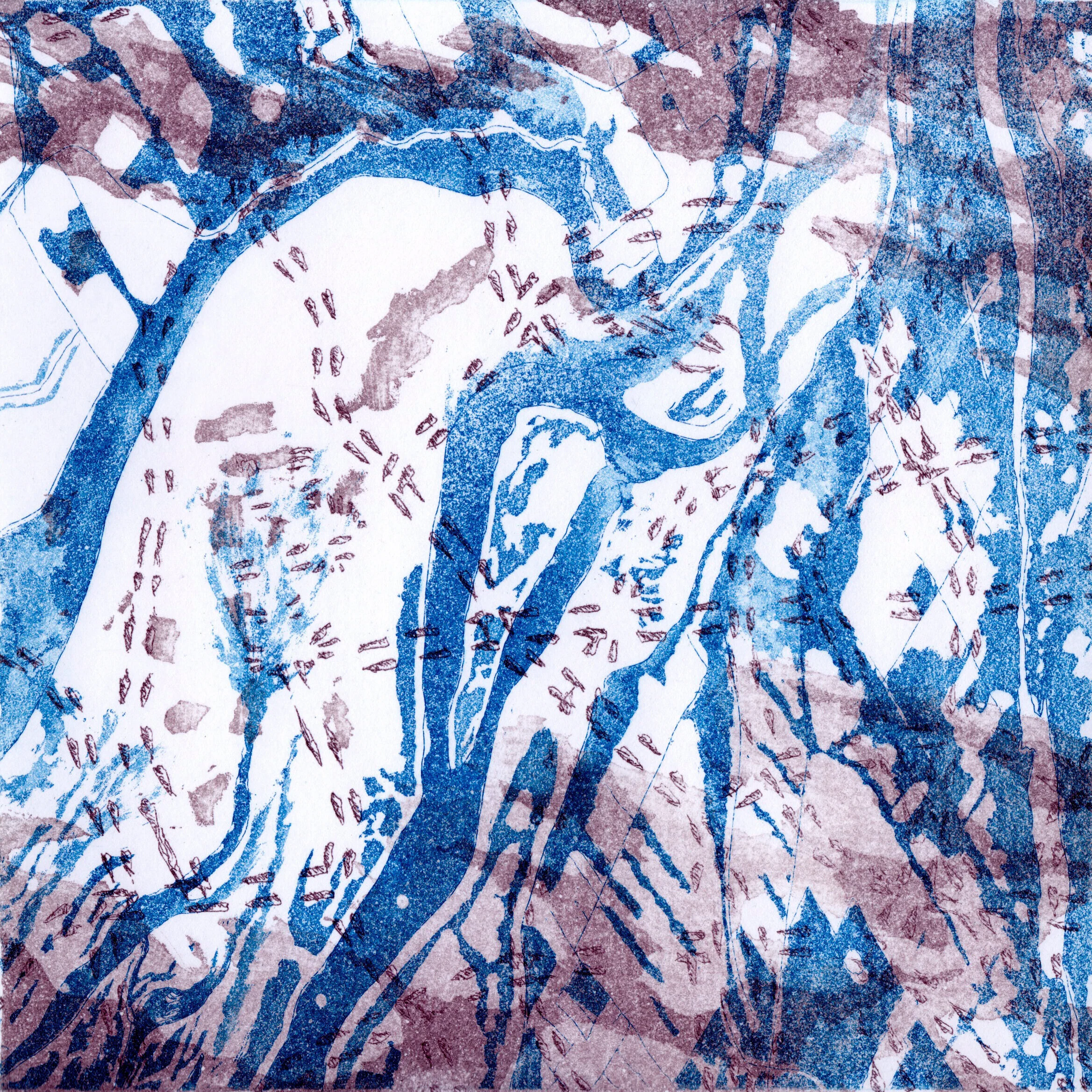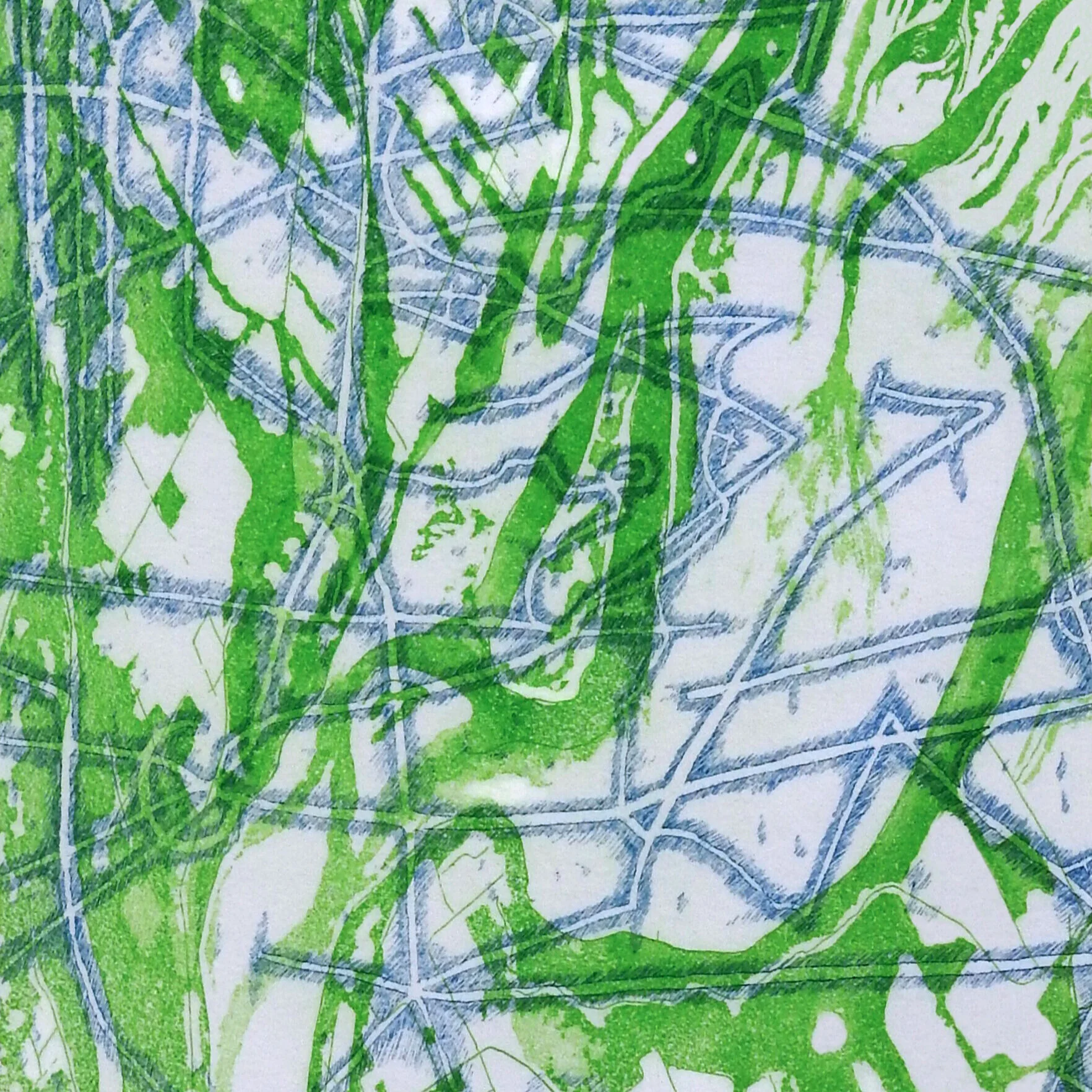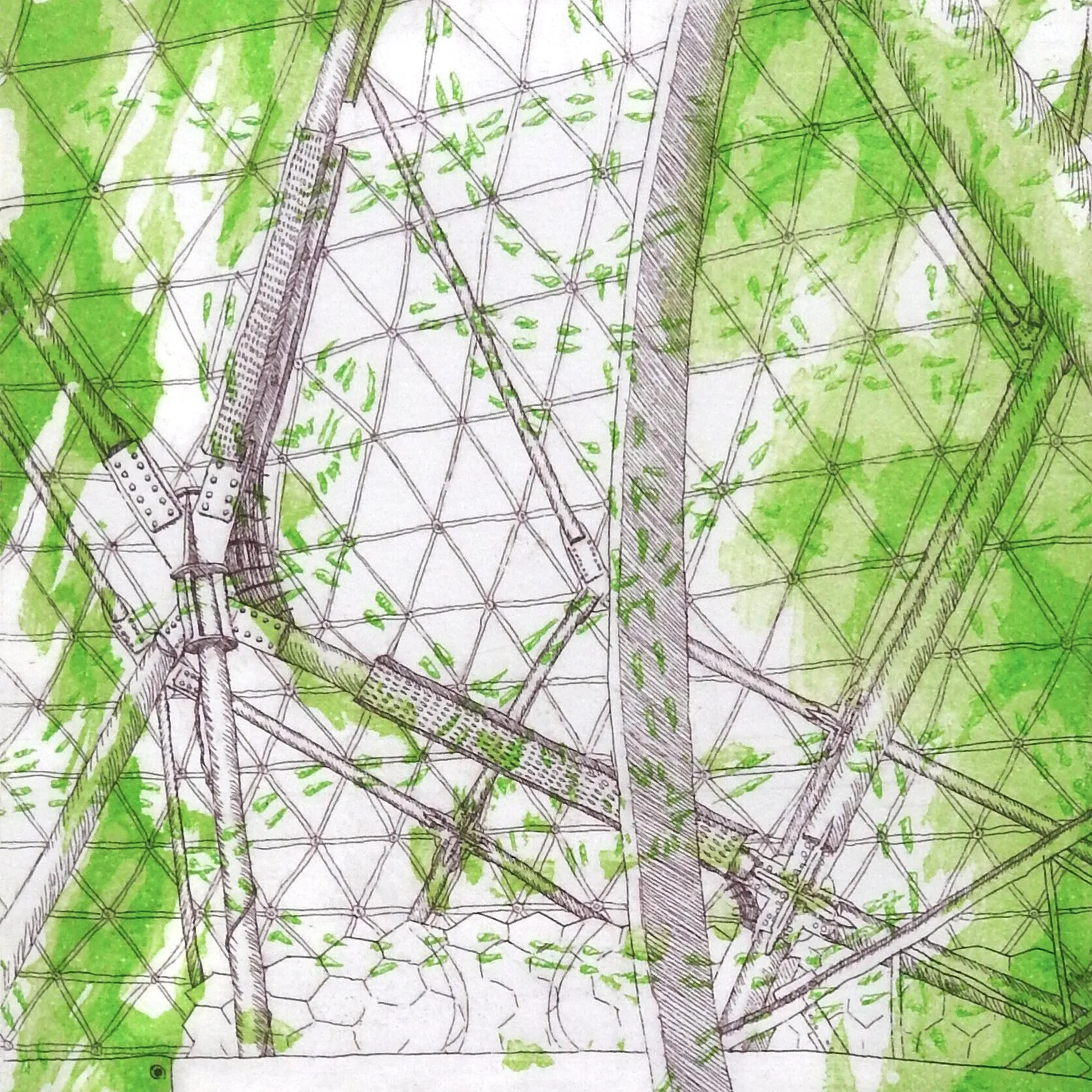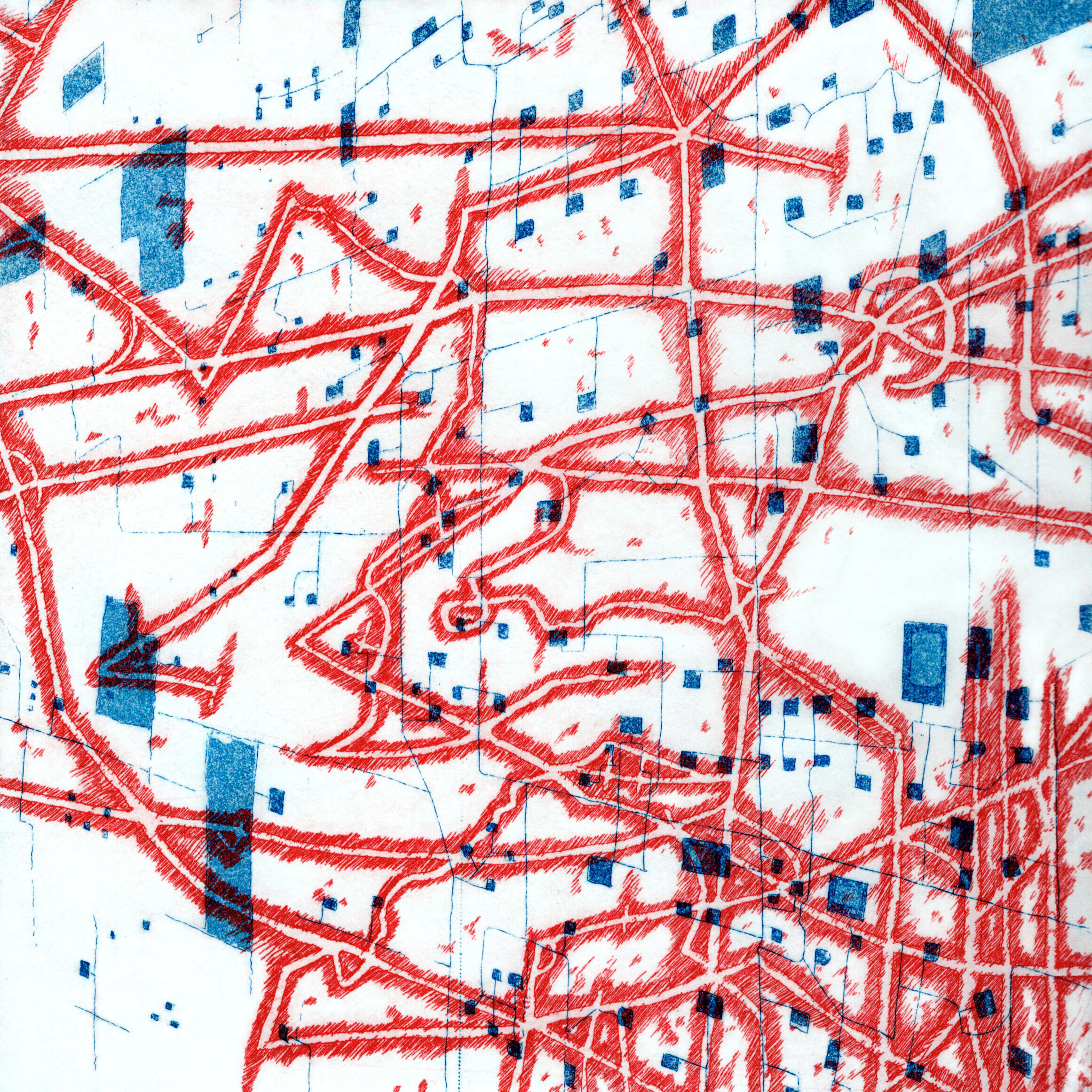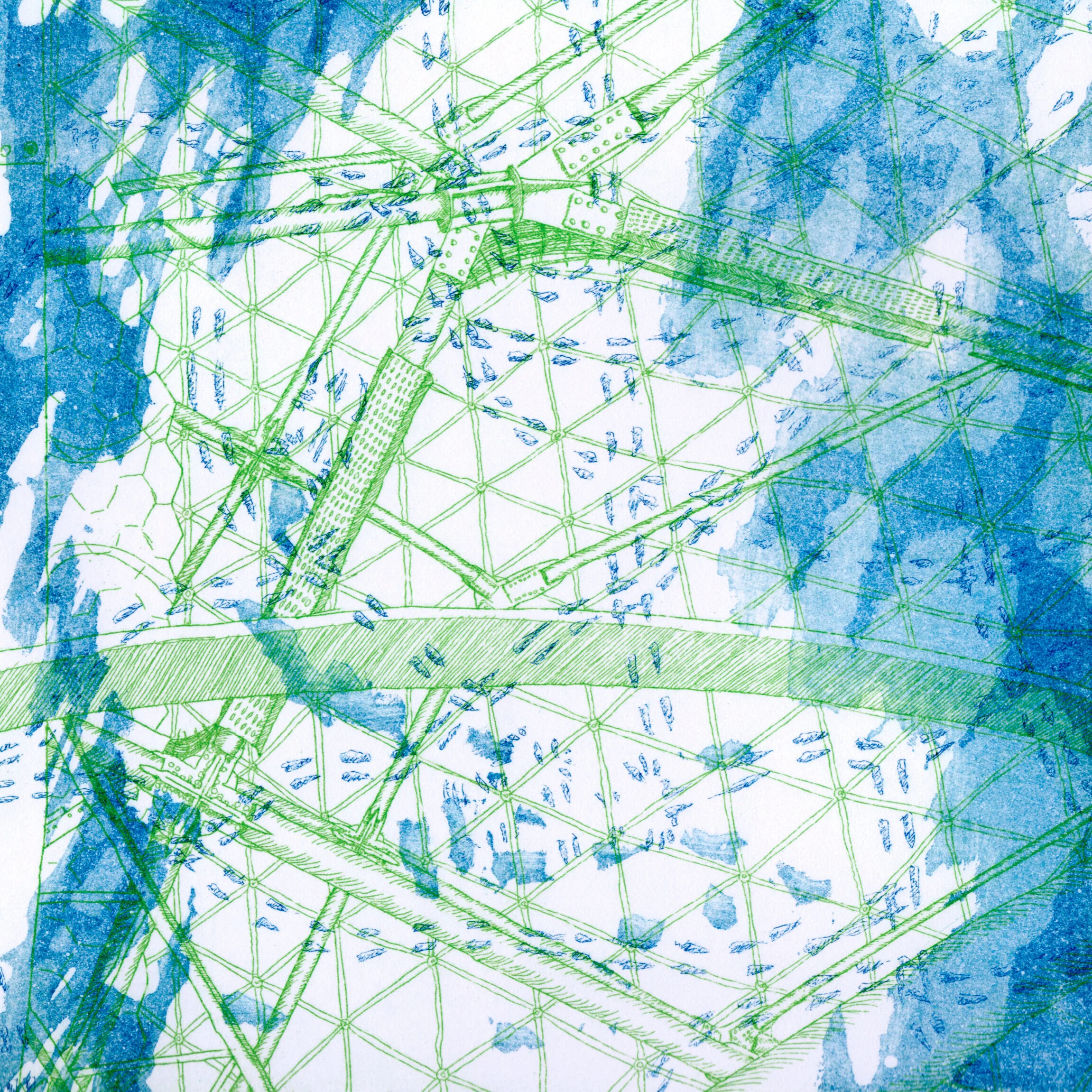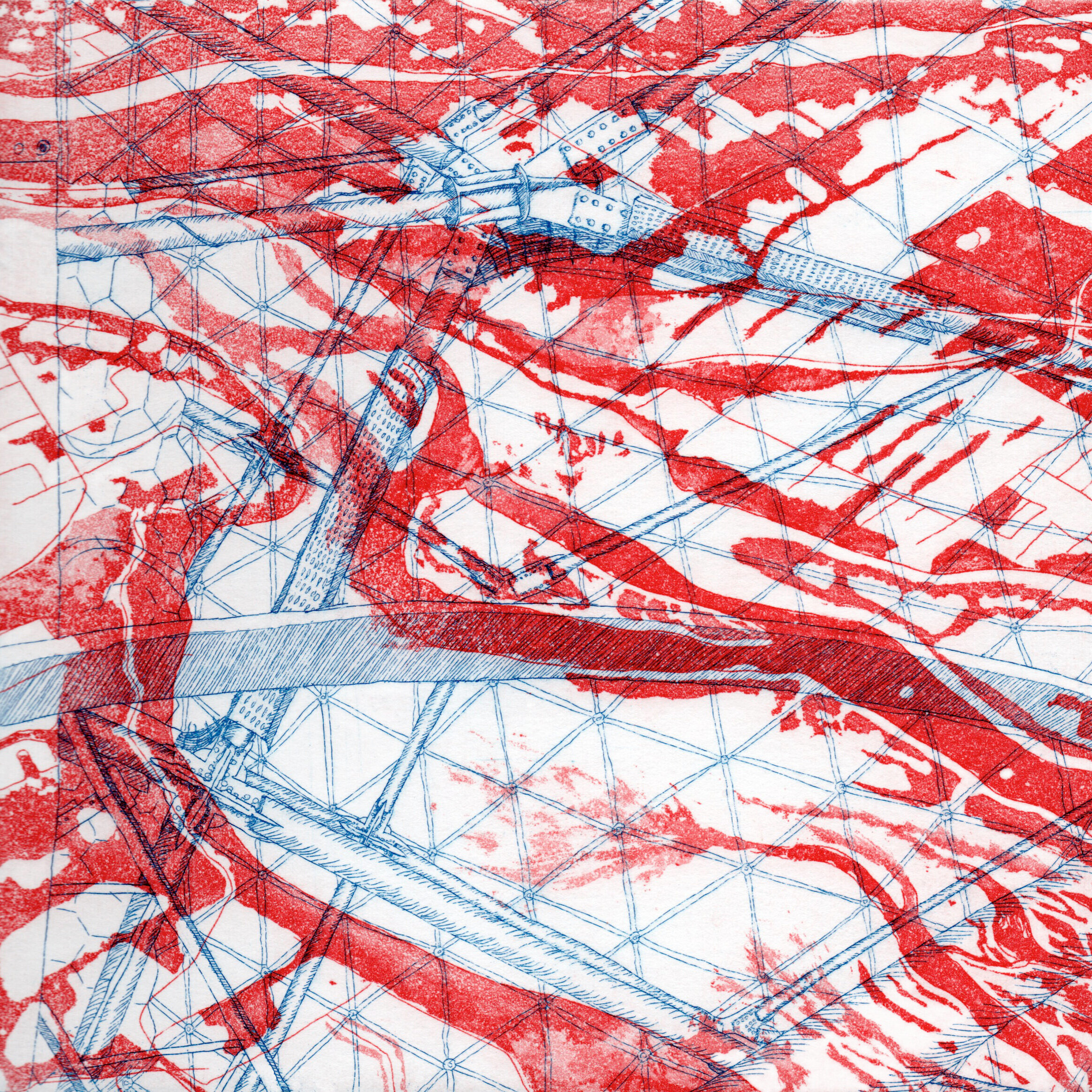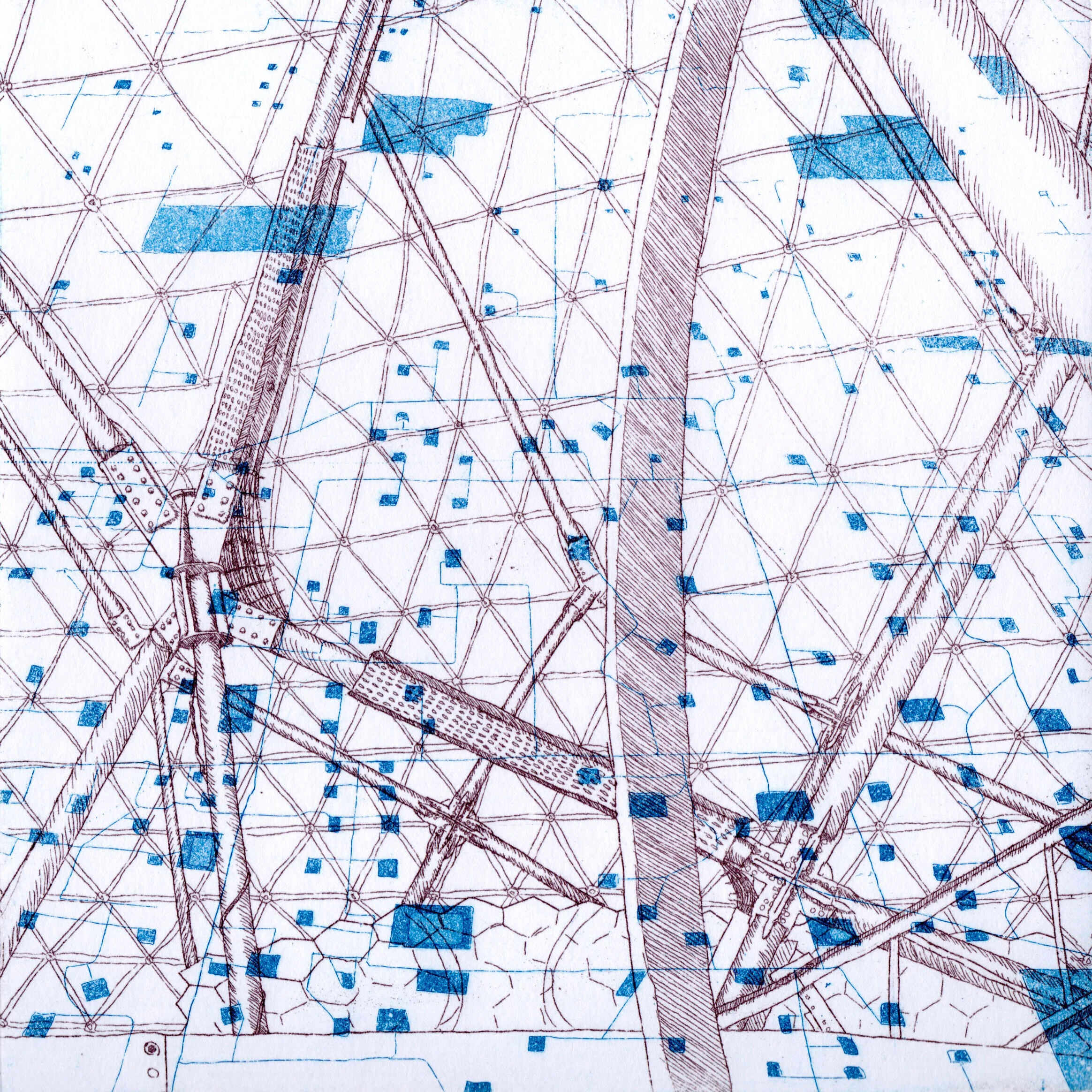At its most basic, this series is a two-part reflection on how human perceptions are changed by movement through time & space. The small intaglio prints explore movement in space -- a dusty West Texas oilfield overlays frost lines on a window; the rigid, geometric steel beams of a telescope overlay random bird tracks in the snow. The sharp juxtapositions of the layered imagery are what give these prints their meaning. The reductive woodcut “tapestries,” meanwhile, explore movement in time. The titles are drawn from 5,000 year-old tales of Mesopotamian gods, whereas the imagery comes from modern-day images of the planets or earthly realms these gods represented.
My inspiration for all my artwork comes from questions. What makes a particular place on Earth feel like home? Is a place really that different from home if the same stars shine down on it every night? I am an avid amateur astronomer, but how would I have perceived the night sky if I lived in a time when the “wandering stars” were considered to be deities to be worshiped, rather than balls of rock & gas floating in space? I think that at their most basic, art & science are the same thing -- humans wondering about the world around them. If this is true, these are my latest wonderings.



